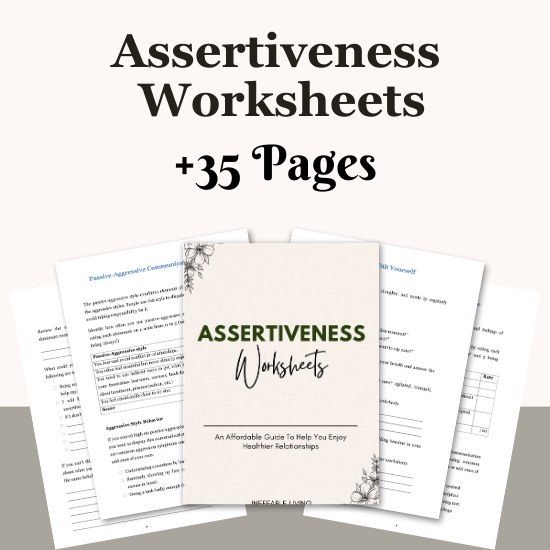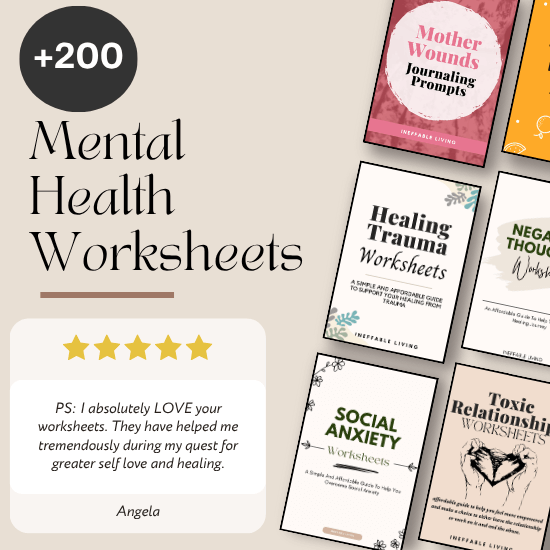Assertive communication is a key skill in the workplace, allowing you to express your thoughts, needs, and boundaries clearly and respectfully.
It strikes a balance between being too passive and too aggressive, helping you maintain healthy relationships while advocating for yourself.
By practicing assertive communication, you can enhance your professional interactions, boost your confidence, and create a more positive work environment.
This guide will help you get started with assertive communication at work.
What Is Assertive Communication?
Assertive communication is the healthy middle ground between passivity and aggression. It’s the ability to express your thoughts, needs, and feelings honestly and respectfully while standing up for yourself and valuing the other person’s rights. To communicate assertively, you need to know both what it is and what it is not.
1. Assertive Communication Is Direct and Honest
You clearly state what you need, want, or feel without hiding or sugarcoating it. You don’t expect people to read your mind or guess what’s wrong.
2. Assertive Communication Is Respectful and Considerate
You express yourself firmly but without attacking, blaming, or demeaning the other person. You show care for both your needs and theirs.
3. Assertive Communication Uses “I” Statements
You take ownership of your feelings and experiences: “I feel overwhelmed when tasks change last minute” instead of “You’re always messing everything up.”
4. Assertive Communication Is Calm and Controlled
Even when emotions are strong, you stay steady in your tone, words, and body language. Assertiveness doesn’t involve yelling or intimidating.
5. Assertive Communication Invites Dialogue
You not only express your needs but also listen openly to the other person’s side, showing a willingness to problem-solve or compromise.
6. Assertive Communication Is Not Passive
Passive communication avoids expressing needs or opinions, often out of fear or discomfort. It sounds like “It’s fine,” “Whatever you want,” or “I don’t mind,” even when you do mind.
7. Assertive Communication Is Not Aggressive
Aggressive communication prioritizes winning or dominating. It involves interrupting, blaming, threatening, or shouting — focusing on overpowering, not understanding.
8. Assertive Communication Is Not Passive-Aggressive
Passive-aggressive behavior expresses anger or frustration indirectly through sarcasm, silent treatment, or guilt-tripping rather than open, honest words.
9. Assertive Communication Is Not Manipulative
Manipulative communication uses guilt, flattery, or subtle control tactics to get what you want without being transparent about your true needs or intentions.
10. Assertive Communication Is Not About Always Getting Your Way
Being assertive means expressing yourself clearly — but it doesn’t guarantee you’ll always get what you want. It’s about communication and respect, not control or entitlement.
How to Use Assertive Communication at Work?
1. Understand What Assertive Communication Is
Recognize that assertive communication involves expressing your ideas, needs, and boundaries in a way that is clear, direct, and respectful.
It’s about standing up for yourself while also considering the perspectives and rights of others.
Understanding the essence of assertive communication helps you approach situations with the right mindset, aiming for a balanced and constructive interaction.
2. Start with Self-Awareness
Reflect on your current communication style. Are you more passive, avoiding conflict and not expressing your needs?
Or are you sometimes aggressive, prioritizing your needs over others’?
Identifying your starting point will help you make the necessary adjustments.
Self-awareness is the foundation of change. Knowing where you stand helps you understand what you need to work on to become more assertive.
Related: Top 5 Tips On How To Be Assertive Without Being Rude
3. Use “I” Statements
Practice using “I” statements to express your feelings and needs.
For example, instead of saying, “You never listen to me,” try, “I feel unheard when my ideas aren’t acknowledged.”
“I” statements help you take ownership of your feelings and communicate them without blaming or accusing others, which fosters a more constructive conversation.
4. Be Clear and Direct
When communicating assertively, be clear and direct about what you want or need.
Avoid vague language or hinting, and state your request or opinion plainly.
Clear and direct communication reduces misunderstandings and ensures that your message is received as intended.
5. Maintain a Calm and Confident Tone
Pay attention to your tone of voice, body language, and facial expressions.
Aim to keep your tone calm and steady, and maintain eye contact to show confidence and sincerity.
A calm and confident tone reinforces your message and helps establish your credibility, making others more likely to listen and respond positively.
Related: Top 35 Boundaries Affirmations To Help You Become More Assertive
6. Practice Active Listening
When engaging in assertive communication, also practice active listening.
This means fully focusing on the speaker, acknowledging their perspective, and responding thoughtfully.
Active listening shows respect for the other person’s viewpoint, which helps build trust and creates a more collaborative environment.
7. Set Boundaries Respectfully
When setting boundaries, be clear about your limits while remaining respectful of others.
For example, you might say, “I can’t take on this project right now, but I’m happy to help with it next week.”
Respectful boundary-setting helps you protect your time and energy without alienating colleagues, contributing to a healthier work-life balance.
Related: +100 Examples of Boundary Violations & How to Deal With It
8. Prepare for Difficult Conversations
Before entering a potentially difficult conversation, plan what you want to say and how you want to say it.
Anticipate possible responses and think about how you’ll handle them assertively.
Preparation helps you stay focused and confident during challenging conversations, reducing the likelihood of becoming passive or aggressive under pressure.
9. Practice Assertiveness in Low-Stakes Situations
Start practicing assertive communication in less challenging situations, such as expressing your opinion in a meeting or making a small request.
As you build confidence, gradually apply these skills to more significant interactions.
Practicing in low-stakes situations helps you develop your assertive communication skills without the pressure of high-stakes outcomes, allowing you to build confidence over time.
Related: 30 Examples of Intellectual Boundaries
10. Handle Criticism Constructively
When receiving criticism, listen without becoming defensive. Acknowledge the feedback, and if necessary, assertively express your perspective or ask for clarification.
Handling criticism assertively shows maturity and professionalism, and it allows for constructive dialogue that can lead to personal and professional growth.
11. Use Assertive Body Language
Align your body language with your assertive communication. Stand or sit up straight, maintain eye contact, and use open, non-threatening gestures.
Assertive body language reinforces your verbal message, helping you come across as confident and credible.
12. Seek Feedback and Reflect
After practicing assertive communication, seek feedback from trusted colleagues or mentors.
Reflect on how you handled different situations and where you might improve.
Feedback and self-reflection help you refine your assertive communication skills and build confidence in your ability to express yourself effectively.
Related: Boundary vs Control

Challenges When Using Assertive Communication at Work
1. Fear of Being Seen as Difficult or Aggressive
You might worry that speaking up will make you look demanding, rude, or hard to work with, especially in workplaces that confuse assertiveness with aggression.
Practice using calm, respectful tones and clear “I” statements to reduce the risk of being misread. Remind yourself: expressing your needs does not make you rude — it makes you responsible.
2. Power Imbalances With Supervisors or Leaders
It can feel intimidating to be assertive with someone who has authority over you, leading you to hold back your opinions or needs to avoid tension or retaliation.
Prepare carefully before assertive conversations with authority figures. Focus on facts, stay professional, and frame requests around shared goals or solutions, not just personal needs.
3. Cultural or Organizational Norms
In some workplaces, assertiveness is discouraged or misunderstood. Speaking directly might clash with an unspoken culture of passivity, indirect communication, or strict hierarchy.
Observe the communication style in your workplace and adjust how you deliver assertiveness. You can still be clear and direct while adapting to the team’s rhythm, language, or formality level.
4. Lack of Practice or Confidence
If you’re not used to being assertive, you may stumble over your words, feel nervous, or second-guess yourself, making it harder to deliver a clear, confident message.
Build assertiveness like a muscle: start small. Practice with low-stakes situations (like setting minor boundaries or voicing small preferences) to gradually strengthen your confidence.
5. Emotional Triggers or Past Experiences
Past experiences of being dismissed, criticized, or ignored can make you hesitant to assert yourself, fearing you’ll be shut down again.
Notice when past wounds make you hesitant and remind yourself: this is a new moment, not a replay of old pain. Deep breaths, grounding exercises, or supportive self-talk can help you stay present.
6. Misinterpretation by Colleagues
Even when you’re being calm and respectful, some coworkers may take your assertiveness personally, interpreting it as criticism or confrontation.
If someone takes your assertiveness the wrong way, calmly clarify your intentions: “I want to make sure we’re on the same page, not create tension.” Restating your purpose helps realign understanding.
7. Balancing Assertiveness With Team Harmony
You might struggle to speak up when you fear disrupting group harmony, worrying that asserting your needs could lead to team tension or conflict.
Frame assertive points as team-focused: “To make sure we all succeed, I think it’s important we clarify…” or “I’d like to share an idea that could help the group.” This keeps assertiveness constructive, not divisive.
8. Overcompensating and Becoming Aggressive
In trying to be assertive, you might accidentally push too hard, slipping into aggressive tones or body language without realizing it.
Check in with your body language, tone, and pacing. Slow down, lower your voice, and remind yourself that firmness doesn’t require force — clear, steady words are enough.
9. Unclear Boundaries or Expectations
It’s hard to assert yourself when roles, responsibilities, or expectations are vague. Without clear ground rules, you may not know what you can or should assert.
When roles are vague, ask for clarity before asserting: “Can we clarify who’s responsible for this part of the project?” Clear information strengthens your position and makes your communication more effective.
10. Handling Pushback or Resistance
Even when you communicate assertively, you may face resistance or defensiveness from others — and it takes emotional resilience to stay steady and not back down.
Expect some resistance — it’s normal. Stay calm, restate your points if needed, and avoid getting defensive. Not everyone has to agree immediately; assertiveness is about clarity, not forcing outcomes.
Using assertive communication at work is a skill that grows over time. By recognizing these challenges, you can prepare for them with self-awareness, practice, and thoughtful strategies, making it easier to hold your ground while maintaining respect and professionalism.
Conclusion
Assertive communication is a powerful tool for enhancing your professional relationships and achieving your goals at work.
By expressing your needs clearly, respecting others, and standing up for yourself with confidence, you can create a more positive and productive work environment.
Remember, assertiveness is a skill that takes time to develop, so be patient with yourself as you practice and grow.
With consistent effort, you can become a more effective and empowered communicator, leading to greater success and satisfaction in your career.



